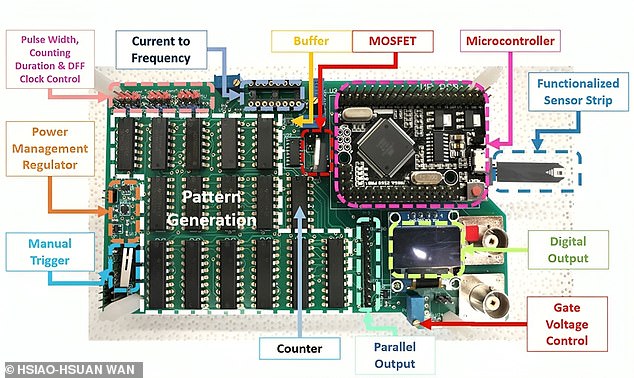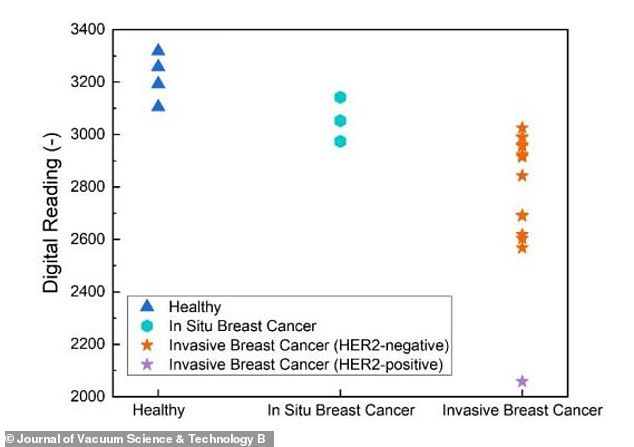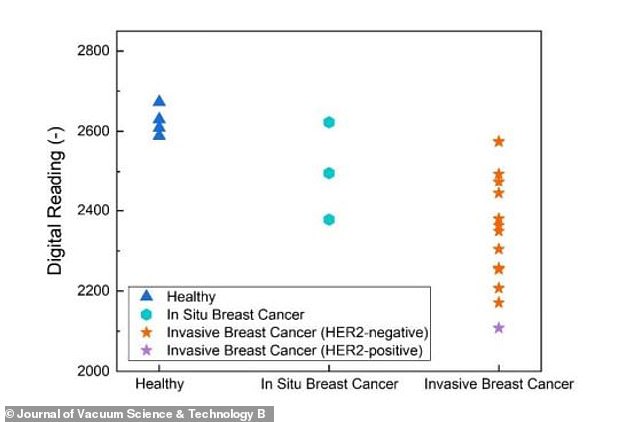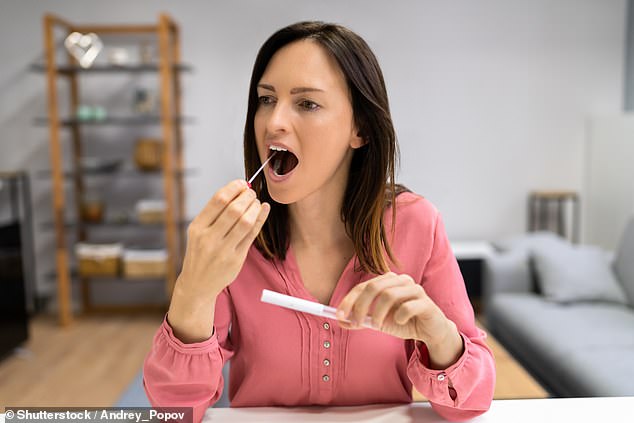A study suggests that a portable saliva test that costs just five dollars could detect breast cancer with a single drop of saliva.
Researchers in Florida and Taiwan have developed a handheld, palm-sized device that detects cancer biomarkers such as genes and proteins in saliva in just five seconds.
The sensor uses common components such as glucose tests, which diabetics use to measure blood sugar, and cheap open source hardware.
Researchers said the device could be a low-cost alternative to invasive procedures such as mammograms and ultrasounds to detect breast cancer, which is on the rise in the US and UK.
Hsiao-Hsuan Wan, an author of the study and a doctoral candidate at the University of Florida, said, “Imagine medical staff performing breast cancer screening in communities or hospitals.”
Researchers in Florida and Taiwan have developed a wearable device that can detect breast cancer markers in five seconds with just a drop of saliva.

The device uses glucose test strips and open source hardware called Arduino. When a drop of saliva hits the test strip, which is treated with antibodies, it sends electrical signals throughout the device. They are then translated into an electronic reading that shows how much breast cancer is detected.
“Our device is a great option because it is portable (about the size of a hand) and reusable.”
“The testing time is less than five seconds per sample, making it very efficient.”
In the experiments, researchers dipped paper glucose test strips into antibody solutions intended to interact with the HER2 and CA 15-3 proteins, which cause breast cancer cells to develop and grow rapidly.
According to the American Cancer Society, one in five breast cancer patients is HER2 positive, including actress Angelina Jolie.
Additionally, experts estimate that up to 80 percent of breast cancer patients have elevated levels of CA 15-3.
The team then obtained 17 human saliva samples from breast cancer patients and four from healthy volunteers.
The samples were divided into three groups: people without cancer, people with cancer that had not spread, and those with breast cancer that had spread beyond its primary site.

This graph shows the levels of HER2 detected in healthy patients, as well as in those with early and advanced breast cancer.

Additionally, this graph shows the levels of CA 15-3 detected in healthy patients, as well as in those with early and advanced breast cancer.
In the tests, a drop of saliva was placed on the test strip. Electrical impulses were then sent to the contact points of the device, which was built using the open source Arduino hardware.
The pulses then attached to the antibodies and altered the charge of the electrode, resulting in a digital signal of cancer biomarkers on the device.
Experts said the tests were able to differentiate between which patients had breast cancer and which did not. And the results came after about five seconds.
“The simplicity of operation and the potential for widespread public use in the future position this approach as a transformative tool in the early detection of breast cancer,” the researchers wrote.
“This research not only represents a crucial advance in diagnostic methodologies, but also promises to revolutionize public health practices.”
Dr Wan said: “In many places, especially in developing countries, advanced technologies such as MRI to detect breast cancer may not be readily available.”
“Our technology is more cost-effective: the test strip costs only a few cents and the reusable circuit board is priced at five dollars.”
“Ultimately, we have created a technique that has the potential to help people around the world.”
However, the method could take several years to be available to patients as it must gain approval from regulatory bodies such as the Food and Drug Administration (FDA) and the Medicines and Healthcare products Regulatory Agency (MHRA).
Additionally, in the UK, it will have to be approved by the National Institute for Health and Care Excellence (NICE), which will determine if it is cost-effective and can be covered by the NHS.
Breast cancer is the most common form of cancer in both the US, the UK and the world.
Death rates have plummeted after successful public health awareness campaigns, better screening and new medications.
However, cases of advanced forms of the disease have increased in recent years, which has been attributed to a lack of testing during the pandemic.
The National Cancer Institute (NCI) estimates there will be more than 300,000 new cases this year in the United States, along with 43,700 deaths.
According to Cancer Research UK, there are around 56,000 cases of breast cancer each year, which is around 150 a day. This includes 11,500 deaths.
“The prevalence of breast cancer in women underscores the urgent need for innovative and effective screening methods,” the researchers wrote.
According to the Mayo Clinic, signs of breast cancer include a lump that feels different from surrounding tissue, a change in the shape or appearance of the breast, an inverted nipple, peeling or peeling pigmented skin around the nipple, and redness or pitting around the nipple. of the nipple. chest skin.
Breast cancer is usually detected with an x-ray called a mammogram.
It involves placing the breasts between metal plates to flatten them and obtain images from above and from the sides.
Currently, all women ages 50 to 74 in the U.S. are recommended to have a mammogram every two years. In the UK, women aged 50 to 71 are encouraged to have a mammogram every three years.
The study was published Tuesday in the Vacuum Science and Technology Magazine B.

